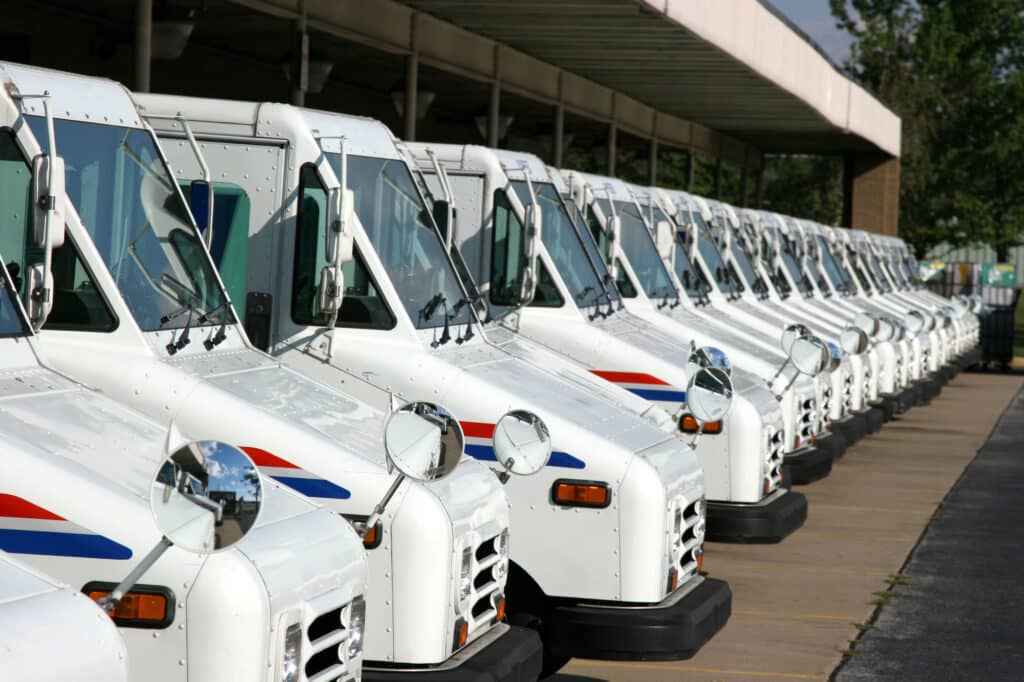How USPS Was Convinced to Electrify Its Fleet, by PIA, Electrification Coalition, EVinfo.net And Many Others
On December 20, 2022, the U.S. Postal Service (USPS) announced a plan to electrify its delivery fleet. A $9.6 billion investment, over the next five years, includes electrifying 75% of USPS new purpose-built Next Generation Delivery Vehicles (NGDV). The plan includes a commitment to acquire 100% electric NGDVs beginning in 2026. This historic investment will install EV charging infrastructure at hundreds of USPS facilities and electrify 66,000 delivery vehicles. This move benefits everyone, by providing cleaner air and reducing GHGs from the transportation sector, a main cause of climate change.
President Biden signed the Inflation Reduction Act to bring down costs for American citizens. These costs included costs for energy. The Inflation Reduction Act’s investment in America’s infrastructure delivers the most significant action ever to tackle the climate crisis and strengthen U.S. energy security. The act included $3 billion to modernize the USPS delivery fleet.

USPS originally planned to order a gas-powered fleet
On Feb. 2, 2022, Lisa Friedman of the New York Times reported that USPS planned to buy gas-powered trucks, despite President Biden’s Climate Order. The Biden administration stated that it wanted an electric federal fleet, before this mess happened. Louis DeJoy, the postmaster general, placed a multibillion-dollar order for mostly gasoline-powered vehicles. This caused outrage from the public and politicians working to fight climate change, including Representative Gerald Connolly, a Virginia Democrat. Connolly leads the House subcommittee overseeing the United States Postal Service. Connolly called the move to invest in more gas-powered trucks “antediluvian” and a threat to the government’s ability to fight climate change. Vicki Arroyo, the E.P.A. associate administrator for policy, said: “The Postal Service’s proposal as currently crafted represents a crucial lost opportunity to more rapidly reduce the carbon footprint of one of the largest government fleets in the world.”
Plug in America, Electrification Coalition, EVinfo.net and many others take action
On Mar 4, 2022, Plug in America sent this action alert:
Urgent! Tell the federal government the USPS must go electric!
The United States Postal Service has decided to spend over $11 billion to replace its aging delivery vehicle fleet with aging technology. Of the 165,000 vehicles being purchased, only 10% will be electric, leaving the remaining 90% as polluting, outdated vehicles that will still be on the road in the 2040s.
This is despite the voices of people across the nation and direction from the Biden administration. We are now in the age of the electric vehicle. We know about the cost savings, elimination of air pollution, and reduction of devastating climate change impacts that demand a switch to EVs. The USPS’s plan falls far short of this promising future and, to add insult to injury, USPS mechanics will still be working on transmissions and spark plugs 20 years from now when they should be trained for the new technology that will be actually used then.
There is no reason for this madness to come to fruition. Tell Postmaster General Louis DeJoy, the USPS Board of Governors, plus your members of Congress and the White House that you want a new direction at the USPS that results in a fully electrified postal delivery fleet!
EVinfo.net gets involved in March 2022
On March 9, 2022, EVinfo.net got involved in the campaign against the USPS gas-powered plan, beginning with sharing PIA’s action alert. Electrification Coalition, a non-profit promoting EV adoption, protested the USPS gas-powered plan on February 23, 2022. Many others joined the fight as well.
EVinfo.net continues the fight for EV adoption
EVinfo.net has received tremendous support from EV professionals, EV advocates, and many others, in the fight against the USPS gas-powered plan. It’s very encouraging to see global progress being made in EV adoption, which will play a major part in fighting climate change.
